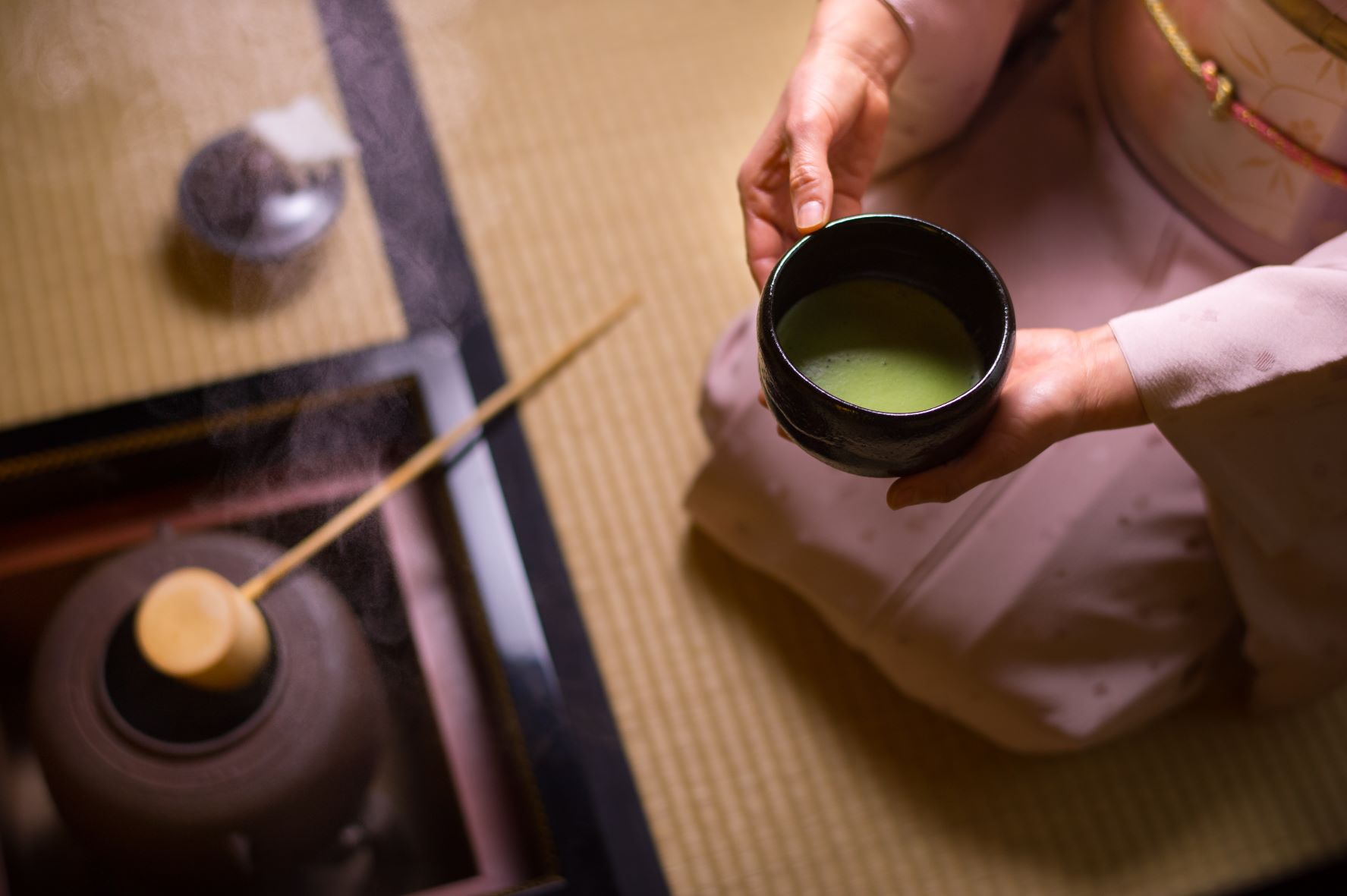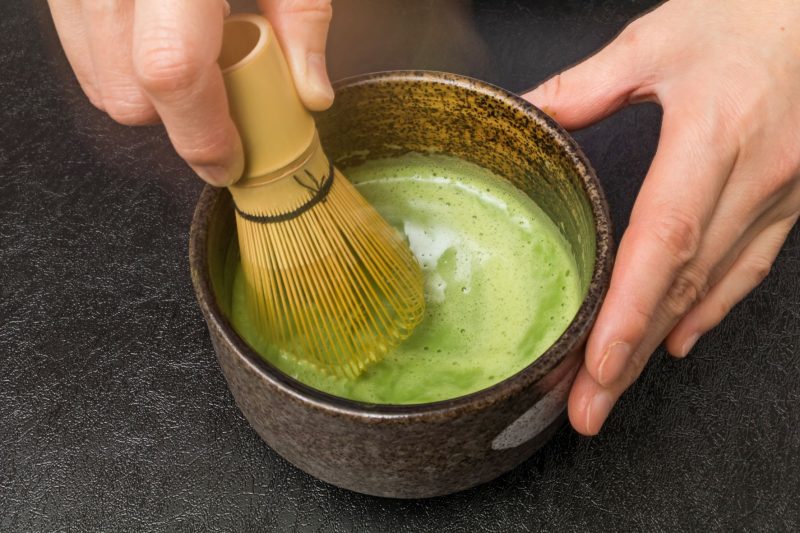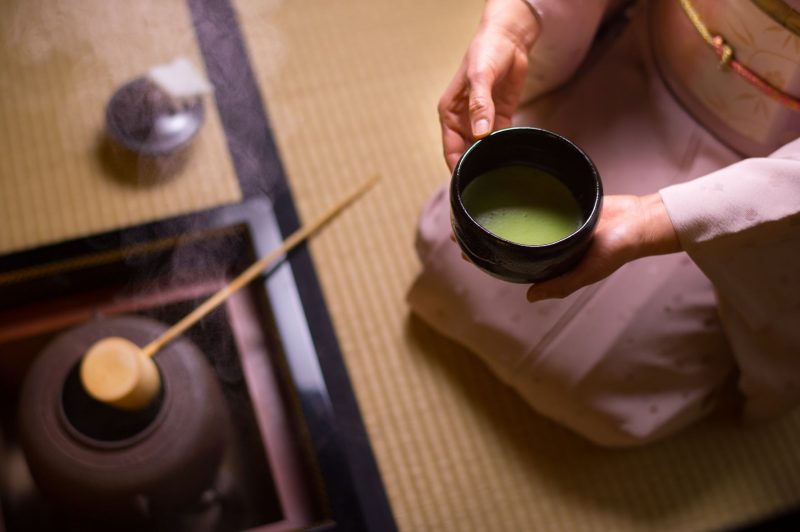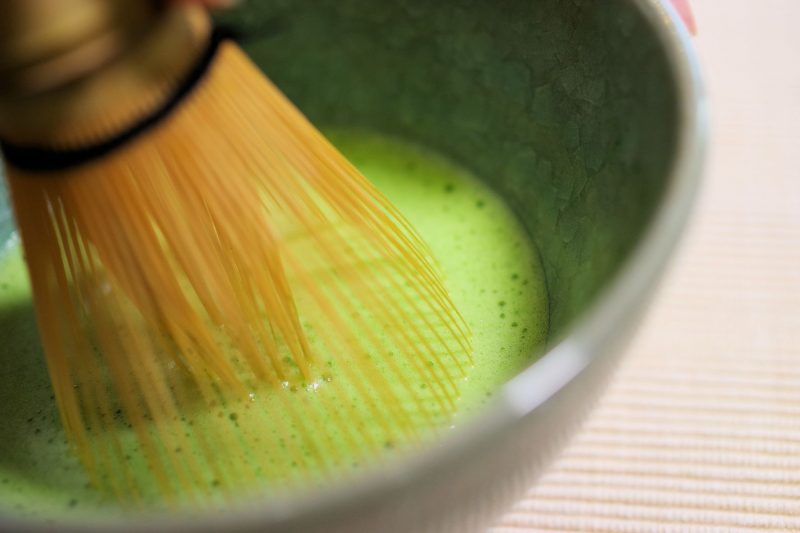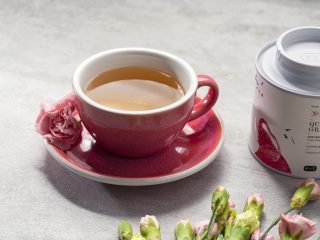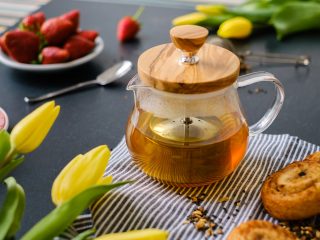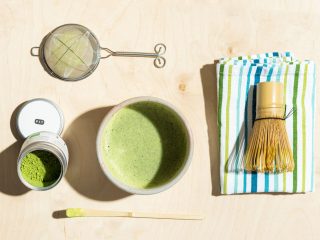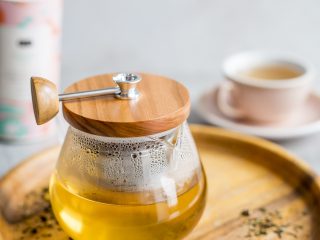Here is an informal (but very accurate) patience test – I challenge you to find a YouTube video showing a japanese tea ceremony (this one is my favourite) and remain undistracted (and focused!) from the beginning right to the very end. How did it go? If you passed, congratulations! If you failed (like me), congratulations are still in order, for you have just experienced the real difference between European and Japanese culture.
Japanese tea ceremony stands in stark contrast to the fast-paced, burn-the-candle-at-both-ends life that we, Europeans, find so seductive. Perhaps it is that disparity of the tea ritual that is especially alluring to us?
History of tea ceremony
Japanese tea ceremony evolved over centuries but has always been closely intertwined with Zen philosophy. The earliest mention of tea itself in Japan dates back to the 8th century, when Emperor Shōmu included it as part of Buddhist rituals. There is very little documentation on the role of tea up until the 12/13th century – this is when a refreshing infusion of Camellia sinensis sinensis leaves gained popularity among Buddhist monks (as an aid in spiritual practice during long hours of meditation), as well as the warrior class.
Due to tea being a luxury good, the ceremony was seen as an opportunity to showcase one’s social status and affluence in shoin style, in lofty reception rooms decorated with precious karamono. Later on the process was simplified, in line with the concept of wabi. The meaning of wabi is almost impossible to convey with words as is often portrayed in paintings – it symbolises a deep introspective experience, solitude in nature, loneliness by choice, quietude. It is the key to understand the essence of Japanese tea ceremony.
The Tea Ceremony
In its most traditional interpretation, tea ceremony can last even four or five hours. A common thread that connects all steps is a deep sense of intimacy and reflection – a small group of guests gathers in the home of the host who symbolically begins the ceremony by lighting the hearth that will later be used to boil water. All participants share a traditional, 13-course kaiseki meal; when the last dish is finished, guests are invited to leave the room and use the restrooms while the host prepares for matcha ceremony, rearranging and decorating its space.
The ritual is initiated with bowing and symbolic cleansing of hands and brewing tools. Every detail matters – one is expected to take off their shoes, cover their feet and sit in a kneeling position. The host readies the bowls and boils water in chagama; guests are then presented with matcha and invited to inspect the powdered tea. During the ceremony wagashi sweets are served in order to counterbalance the atsringency of the tea.
Time for the turning point of the ceremony – brewing matcha 🙂 The host begins by adding a couple of spoons of powder and hot water to the bowls and whisking it energetically with chasen. This ensures thick, frothy texture of the liquid. Once ready, tea is served to the first guest who turns the bowl by 180 degrees, takes a sip and passes it to the next person. The process of brewing and sharing tea lasts around 20 minutes – these days it is often practiced by itself, without the preceding meal. However, kaiseki does play a vital role in the ritual, introducing an introspective t frame of mind, peace and reflection.
Japanese tea ceremony is highly ordered – each step involves its own set of rules and customs each guest is expected to follow. Although they may seem excessive at first, they serve a purpose. Injecting the process with predictability sets one’s mind free from worrying and analysing – “what should I do?”, “how many sips should I take to express gratitude but not greediness?” – and allows guests to embrace the present moment and be in the now.
True understanding of tea ceremony will come to you only when you experience it yourself – not necessarily by travelling to Japan. Start your own ritual – switch off your phone. Play music – perhaps the sounds of nature or Eastern instruments? Make matcha, taking your time and savouring each step. Let this be a time of reflection, meditation over a cup of tea, where – if only for a brief moment – you are free from worrying about the past or the future. You will come to understand why the Japanese made a ceremony out of a simple act of drinking tea – and your experience will take a new meaning once you are not in the rush 🙂

